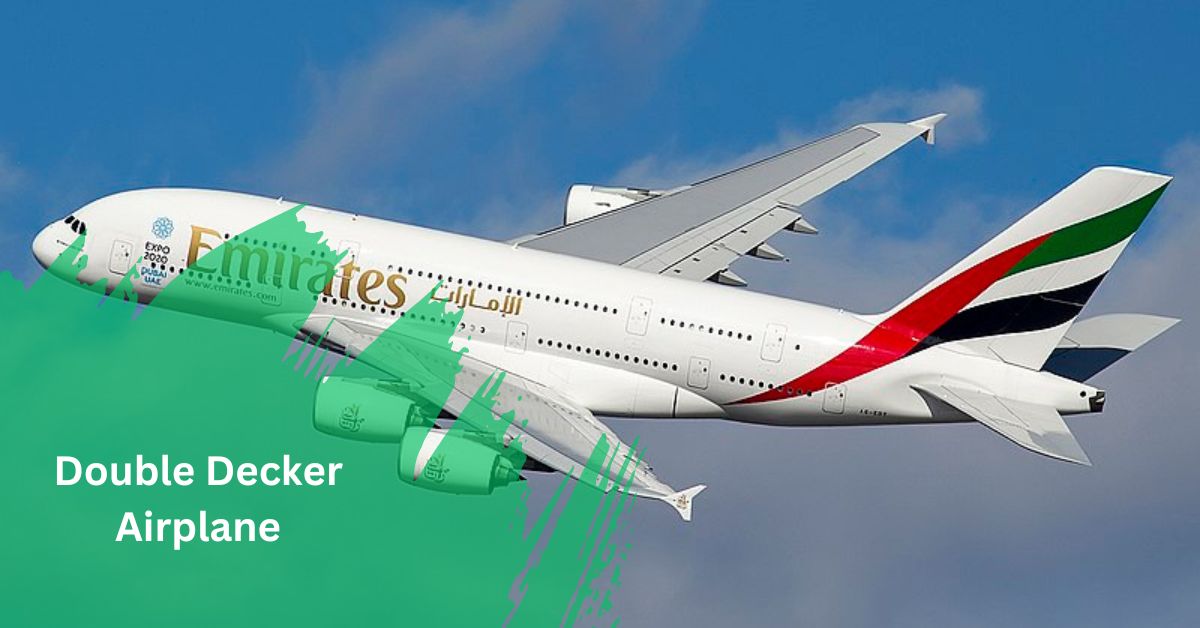Double Decker Airplane – A Complete Guidance!
In the dynamic world of aviation, double decker airplanes stand tall as marvels of modern engineering and innovation.
Double decker airplanes feature multiple levels of seating, providing increased passenger capacity and offering enhanced comfort for travelers.
Join us as we embark on a journey to explore the fascinating realm of double decker airplanes, delving into their history, advantages, challenges, and prospects.
Introduction To Double Decker Airplanes:
Double decker airplanes, such as the Airbus A380 and Boeing 747, offer increased passenger capacity and spacious interiors.
These iconic aircraft have revolutionized long-haul travel, providing passengers with enhanced comfort and luxury amenities.
With their distinctive designs and advanced technology, double decker airplanes continue to shape the future of aviation, catering to the growing demand for efficient and enjoyable air travel experiences.
Evolution And History:
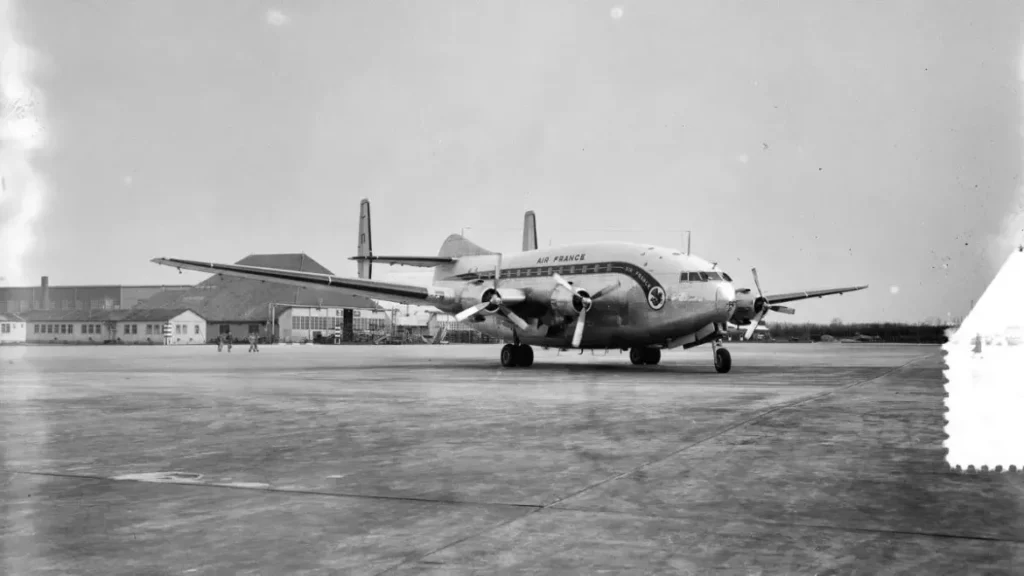
Double decker airplanes have a rich history dating back to the early 20th century. The concept gained traction with the introduction of larger aircraft capable of accommodating multiple levels of seating.
However, in the latter half of the century, double decker designs became more prevalent, with manufacturers pushing the boundaries of size and capacity.
Early Concepts and Prototypes: In the mid-20th century, aviation pioneers experimented with various designs to maximize passenger capacity without compromising safety or performance. These early prototypes laid the groundwork for future double-decker aircraft technology advancements.
Advantages Of Double Decker Airplanes:
1. Increased Passenger Capacity:
Double decker airplanes offer significantly higher seating capacity compared to traditional single-level aircraft.
This allows airlines to accommodate more passengers per flight, optimizing revenue potential and operational efficiency.
2. Cost Efficiency:
Despite their larger size, double decker airplanes can be cost-effective for airlines, especially on high-demand routes where filling more seats translates to higher revenue per flight.
3. Enhanced Passenger Experience:
With multiple levels of seating, double decker airplanes often provide a more spacious and comfortable environment for passengers, offering amenities such as larger seats, wider aisles, and more extensive entertainment options.
4. Flexibility In Cabin Configuration:
Double decker airplanes provide airlines with greater flexibility in cabin configuration, allowing for a mix of seating classes to cater to different passenger preferences and travel needs.
5. Improved Airline Branding:
Operating double decker airplanes can enhance an airline’s brand image and reputation, signaling a commitment to luxury, comfort, and innovation in air travel.
6. Competitive Advantage:
Airlines that operate double decker airplanes may gain a competitive edge in the market, attracting passengers who prioritize comfort, space, and amenities when choosing their travel options.
Challenges And Limitations:
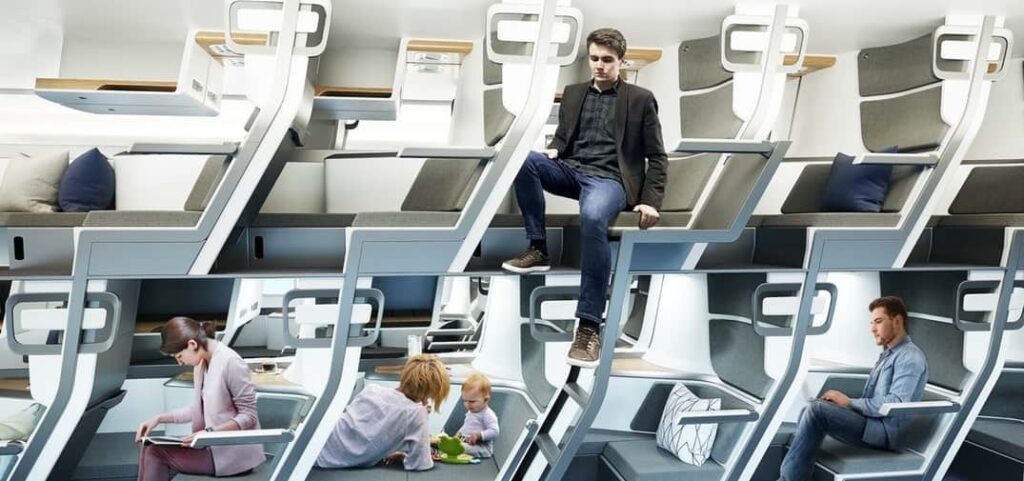
1. Structural Complexity:
Designing and manufacturing double decker airplanes involves intricate engineering to ensure the structural integrity of the aircraft.
The construction of reinforced fuselage and wings capable of supporting multiple levels of seating adds complexity and cost to the manufacturing process.
2. Airport Infrastructure Requirements:
Double decker airplanes require specialized infrastructure at airports, including more enormous boarding gates, jet bridges, and parking stands to accommodate their size. Not all airports can handle these aircraft, limiting their operational flexibility and route options.
3. Operational Constraints:
The sheer size of double decker airplanes can pose challenges regarding ground operations, such as taxiing, parking, and airport servicing.
Additionally, loading and unloading passengers and cargo may take longer due to the more significant number of doors and decks.
4. Fuel Consumption:
While double decker airplanes offer increased passenger capacity, they also consume more fuel per flight compared to smaller aircraft.
This higher fuel consumption can increase operating costs and environmental impact, particularly on shorter routes where the aircraft may need to be fixed at total capacity.
5. Limited Route Flexibility:
Double decker airplanes are typically deployed on long-haul routes with high passenger demand, limiting their flexibility to operate on shorter routes or to serve smaller airports with runway length restrictions.
6. Economic Viability:
Operating double decker airplanes requires significant upfront investment in acquisition, maintenance, and training.
Airlines must carefully evaluate the economic viability of deploying these large aircraft, considering route profitability, market demand, and competition.
7. Maintenance Complexity:
Maintaining double decker airplanes involves specialized training and equipment due to their unique design and systems.
Routine maintenance tasks, such as inspections, repairs, and component replacements, can be more challenging and time-consuming than smaller aircraft.
Popular Double Decker Airplane Models:
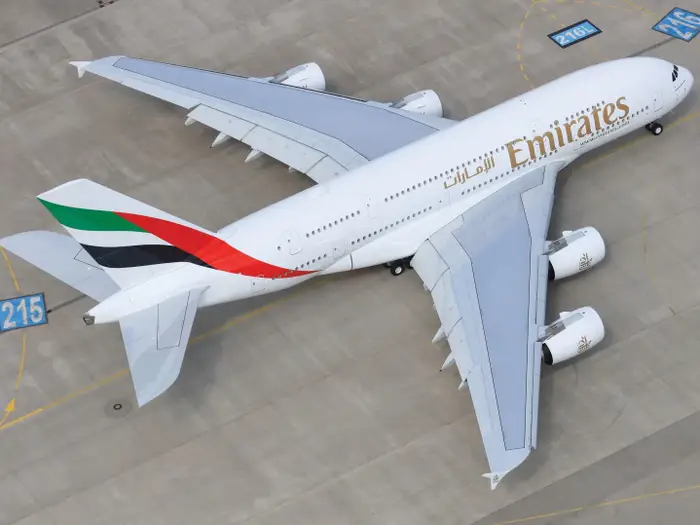
1. Airbus A380:
The Airbus A380 is one of the most iconic and widely recognized double decker airplanes ever produced. With its distinctive humpback fuselage design and spacious interior, the A380 has redefined long-haul air travel, offering unparalleled comfort and luxury to passengers.
2. Boeing 747:
The Boeing 747, often called the “Queen of the Skies,” is another legendary double-decker model. Introduced in the 1970s, the 747 revolutionized air travel with its unprecedented size and capacity, paving the way for the development of modern jumbo jets.
3. Antonov An-225 Mriya:
While primarily designed as a cargo transport aircraft, the Antonov An-225 Mriya features a distinctive double decker layout with an extended fuselage and twin tail booms.
It is the largest and heaviest airplane ever built, capable of carrying oversized cargo and equipment for various military and commercial applications.
4. Boeing 777x:
The Boeing 777X is the latest iteration of the famous 777 series, featuring a folding wingtip design and advanced aerodynamics to improve fuel efficiency and performance.
With its spacious cabin and enhanced range, the 777X is poised to become a prominent player in the long-haul air travel market.
5. Airbus A330:
While not a traditional double decker airplane, the Airbus A330neo (new engine option) variant features a twin-aisle cabin layout with the option for multiple seating configurations, including a high-density layout with two levels of seating. This flexibility makes the A330neo a versatile choice for medium- to long-haul airlines.
Double Decker Airplanes In Commercial Aviation:
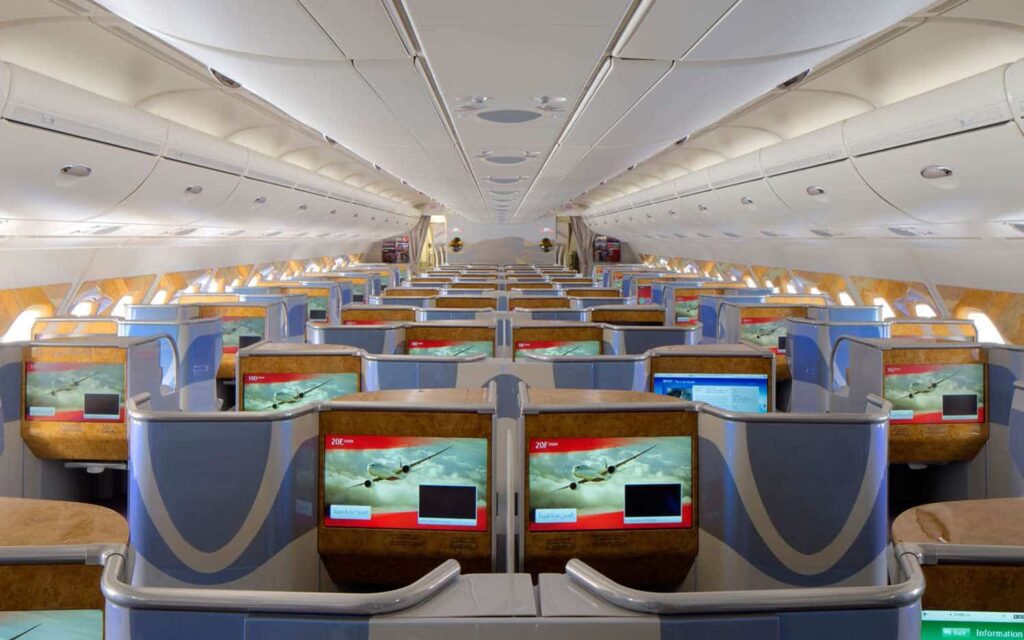
In commercial aviation, double decker airplanes play a crucial role in meeting the growing demand for air travel across the globe.
Airlines deploy these aircraft on key routes, catering to both business and leisure travelers with enhanced comfort and convenience.
1. Long-Haul Flights:
Double decker airplanes are particularly well-suited for long-haul flights, where passenger comfort and amenities are paramount.
Their spacious interiors, advanced entertainment systems, and onboard facilities make them the preferred choice for discerning travelers embarking on extended journeys.
Safety Measures And Regulations:
Ensuring the safety of passengers and crew aboard double decker airplanes is a top priority for airlines and regulatory authorities.
Stringent safety measures, rigorous maintenance protocols, and comprehensive training programs are in place to minimize the risk of accidents and incidents.
1. Regulatory Oversight:
Double decker airplanes are subject to stringent safety regulations imposed by aviation authorities worldwide.
These regulations cover various aspects of aircraft design, operation, and maintenance to ensure the highest safety and reliability standards.
Conclusion:
In conclusion, double decker airplanes represent a remarkable feat of engineering and ingenuity, offering unparalleled capacity, comfort, and luxury in air travel. Despite facing challenges and uncertainties, these majestic aircraft continue to inspire awe and fascination, shaping the future of aviation for generations to come.
FAQs:
1. Are Double Decker Airplanes Only Used For Long-Haul Flights?
While double decker airplanes are commonly deployed on long-haul routes, they can also be used for shorter flights depending on passenger demand and operational considerations.
2. How Many Passengers Can A Double Decker Airplane Typically Accommodate?
The seating capacity of double decker airplanes varies depending on the model and configuration, with some capable of accommodating over 600 passengers in a single flight.
3. What Are The Main Challenges In Designing Double Decker Airplanes?
Designing double decker airplanes involves overcoming structural integrity, weight distribution, and aerodynamic efficiency challenges to ensure safe and efficient operation.
4. Are Double Decker Airplanes More Fuel-Efficient Than Single-Level Aircraft?
While advancements in technology have improved the fuel efficiency of double decker airplanes, their larger size and capacity may result in higher overall fuel consumption compared to smaller single-level aircraft on a per-passenger basis.
5. Are there any plans to develop even larger double-decker airplanes in the future?
While there have been discussions about developing larger double decker airplanes, market demand, regulatory considerations, and technological feasibility will ultimately determine the feasibility of such projects.
Also Read:
